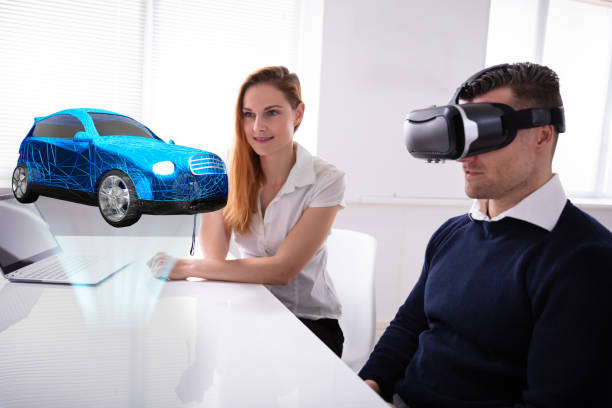Transforming Drivers Ed: From Simulations to Virtual Reality
The landscape of driver education has dramatically evolved with the advent of new technologies. No longer confined to traditional classroom settings and road practice, modern drivers now incorporate advanced tools that enhance learning experiences and outcomes. At Get Drivers Ed, we leverage these cutting-edge technologies to provide a comprehensive and effective learning environment for our students. This blog explores how technology, from simulations to virtual reality, is revolutionizing drivers ed.
Simulations: Realistic and Safe Practice
Immersive Learning Environments
One of the most significant advancements in drivers ed is the use of driving simulators. These tools create realistic driving scenarios that allow students to practice and hone their skills in a controlled and safe environment.
Real-World Scenarios: Simulations can replicate various driving conditions, from busy city streets to rural roads, and different weather conditions such as rain, snow, and fog.
Safe Environment: Students can make mistakes and learn from them without the risk of real-world consequences, promoting a safer learning experience.
Repetition and Practice: Simulations allow students to repeat challenging scenarios until they master them, providing unlimited practice opportunities.
Enhancing Skill Development
Simulations are designed to cover a wide range of driving skills, from basic vehicle control to advanced defensive driving techniques.
Basic Maneuvers: Students can practice essential driving maneuvers such as turning, parking, and lane changes.
Hazard Perception: Simulations help students develop the ability to identify and respond to potential hazards on the road.
Defensive Driving: Advanced simulations teach defensive driving strategies, improving students' ability to anticipate and avoid accidents.
Virtual Reality: A New Dimension in Driver Education
Immersive VR Experiences
Virtual reality (VR) takes driver education to a new level by providing fully immersive experiences that engage students in ways traditional methods cannot.
360-Degree View: VR provides a 360-degree view of the driving environment, giving students a more comprehensive understanding of spatial awareness and situational context.
Interactive Scenarios: Students can interact with the virtual environment, making decisions and experiencing the consequences of their actions in real-time.
Engaging Content: The immersive nature of VR makes learning more engaging and enjoyable, which can enhance retention and understanding.
Practical Applications of VR in Drivers Ed
VR is particularly effective for teaching complex driving scenarios and enhancing practical skills.
Emergency Situations: VR can simulate emergency situations such as brake failures, tire blowouts, and sudden obstacles, helping students learn how to react calmly and effectively.
Night Driving: VR allows students to experience night driving and practice adjusting to lower visibility and different road conditions.
Urban Driving: Navigating busy city streets with pedestrians, cyclists, and heavy traffic can be practiced safely in a virtual environment.
Online Learning Platforms: Accessible and Flexible Education
Comprehensive Online Courses
At Get Drivers Ed, we offer online courses that combine traditional learning materials with advanced technological tools to provide a comprehensive education.
Interactive Modules: Our courses include interactive modules with videos, animations, quizzes, and simulations to keep students engaged and enhance understanding.
Self-Paced Learning: Students can progress through the course at their own pace, allowing them to spend more time on challenging topics.
Accessibility: Online platforms make drivers ed accessible to students regardless of their location, eliminating the need for physical attendance.
Benefits of Online Learning
Online learning platforms offer several advantages over traditional classroom settings.
Flexibility: Students can access course materials at any time, fitting their studies around their schedules.
Cost-Effective: Online courses are often more affordable than in-person classes, and they eliminate transportation costs.
Personalized Learning: Students can tailor their learning experience to their needs, focusing on areas where they need improvement.
The Future of Drivers Ed
Continuous Technological Advancements
The role of technology in drivers ed is continually evolving, with new advancements on the horizon.
Artificial Intelligence: AI can provide personalized feedback and adaptive learning experiences based on individual student performance.
Augmented Reality: AR can overlay driving instructions and safety information onto the real-world view, enhancing practical training.
Connected Vehicles: Future technologies may include connected vehicles that communicate with driving simulators and online platforms, providing real-time data and feedback.
Conclusion
Technology has revolutionized the way we approach driver education, making it more effective, engaging, and accessible. From realistic driving simulations to immersive virtual reality experiences, modern drivers leverage these tools to prepare students for the challenges of the road. At Get Drivers Ed, we are committed to utilizing the latest technologies to provide the best learning experience possible.
Ready to experience the future of driver education? Enroll in our comprehensive online drivers ed program today and take advantage of our cutting-edge tools and resources to become a confident and safe driver.

